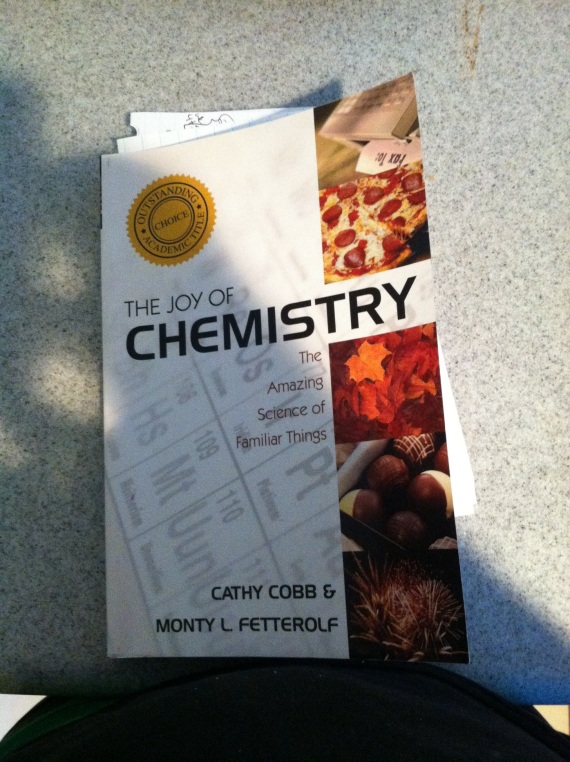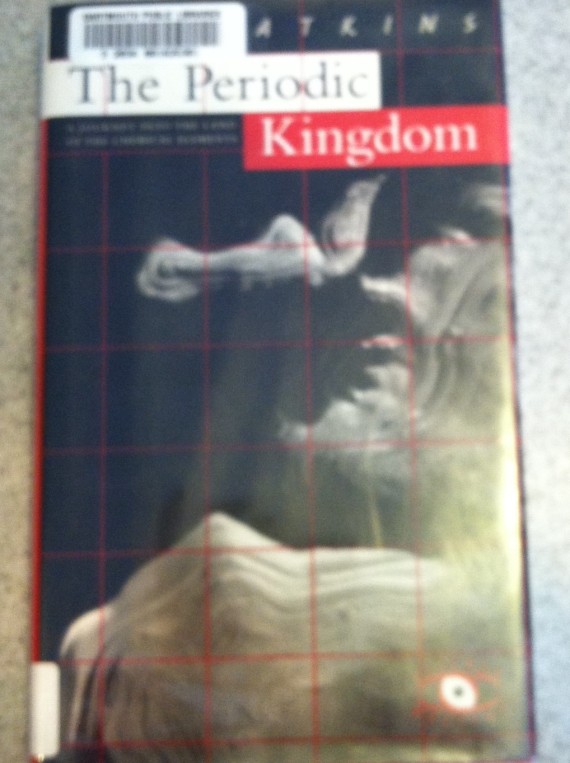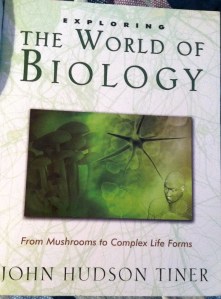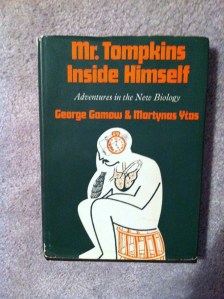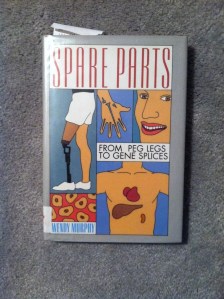Dear Reader,
This is a question that came up on a discussion board and it’s one of those things I probably should have gotten together a while ago. You can find all my lists of living books here.
What is Nature Lore and How do you use it?
Simply put, “nature lore” refers to books that tell about nature and science-related topics in a literary way. I use the term because it is popular in Charlotte Mason circles. In reality, “creation lore” might be a better term. I fear that nature lore makes one think that we must read about nature only — animals especially and maybe a little about plants. I use “creation” to draw our attention to all that God has made, from the stars to the rocks, from weather to physical laws. Really any science related topic presented in a literary form is fair game.
If I could go back in time, I would do a lot less with my kids when they were little, but one thing I would definitely keep is reading nature creation lore aloud. The goal of science in the early years particularly is just to keep alive and feed children’s innate curiosity and love for knowledge. Most kids have a love for the world around them in some way. It may be a passion for dinosaurs or panda bears or a penchant for filling up your car and their underwear drawer with rocks and sticks, but one way or another it comes out. Feeding this love requires two things: time outside and good books. (The former I hope is obvious but at any rate would be the subject for another post.) Books give us the knowledge to dig deeper into what we see with our eyes (and feel and smell and hear). They expand out horizons. We don’t all live near volcanoes and kangaroos. Books take us to the places we can’t go ourselves. Good authors communicate their own passion and inspire ours. They draw us in through their own enthusiasm for their subject. (For more on science and why and how we study it, see this post.)
The actual process of doing nature lore with your kids is simple: read and narrate, read and narrate. If you have multiple kids, have them take turns narrating what you read. Read chunks that are appropriate to their age and ability to retain. With the littlest kids, you may be reading a paragraph or two at a time only. If you have multiple ages, I usually gear my reading to just below the level of the oldest child participating. The oldest can still get something out of what it read but so can the next one or two. Don’t worry too much about littles. They will get more than you expect. One nice thing about science-y topics is that they often lend themselves to alternative forms of narration. Charts, pictures, and diagrams can be good ways to reproduce what one has heard. For instance, if you have just read about types of volcanoes, each child can take a few minutes to draw the various kinds and, depending on age and ability, label them.
Nature lore and time outside are really all you need for science in the elementary years. I know this can be hard to swallow and that you want to add in more but remember the goals — to encourage a love for creation, to build relationships with the things God has made, to encourage curiosity and observational skills. If your child wants to do some hands-on experiments, that’s fine, but you don’t need such things. (They will be getting some hands-on experience in their time outside as well. It is fun to make slime and watch things explode and I would not deprive any kid of those joys, but often science experiments made for young children are pretty preachy and basic anyway.)
Nature lore does not need to end. As my kids got older, meaning into middle school, I would often pick a topic for the year or the term. Things like meteorology or geology (again, look at my other booklists for some of those). Even in high school we continue to use living books as the basis of our science, adding in labs and definitely being more topical (a year each of biology, chemistry, physics). But that doesn’t mean you need to abandon nature lore. There are many wonderful books written for adults that keep alive that sense of wonder and that transport us to new places.
This is not going to be a complete list (if that were ever possible!). There is just too much out there and I am sure I have forgotten a lot of what we used when they were little. If you have other suggestions, please let me know and I will add them. Don’t be afraid to find your own books. Some of the best ones we’ve used were garage sale or thrift store finds that are not on anybody else’s nature lore list. After you have done this a bit, you will become more adept at judging books for yourself. You can usually pick up a book and read the first few paragraphs and get a sense if it is going to be an engaging book and if it is the appropriate level for your kids. If you get a little ways in and for some reason don’t love it, drop it and move on to another.
The books below are roughly sorted by age level, from the youngest to the oldest. I am very hesitant to give specific age ranges. Good nature lore often appeals to a wide range fo ages. Older children can still get something out of simple books and young ones will get more than you expect from books that seem over their heads.
Nature Lore Books for All Ages
Among the ………..People by Clara Dillingham Pierson — This series of books focuses on various environments — meadow, forest, etc. Each reading is fairly short, maybe 2 pages, which can work well with younger children. We had a one volume set that included all the books. My daughter did get tired of them after a while. I do think the whole lot might be a lot to do all at once.
Natural Wonders Every Child Should Know by Edwin Tenney Brewster — This was one of those thrift store finds for me. It covers a wide range of topics (including reproduction!) at an elementary level. I include not because I expect it to be easy for anyone to find (though certainly pick it up if you do) but because look at that title — if you see an old looking book with a title like this, you should always buy it.
Millicent Ellis Selsam — Some authors are so good it is hard to pick one book by them. Selsam’s are fairly brief, mostly of the easy reader variety, and cover a variety f topics. She has books on seeds, microscopes, turtles, and more.
Robert McClung — McClung will reappear below as well. His easier books are fun, easy reader level books. We particularly liked the one about Stripe the Chipmunk.
In the Land of the Lion — Another thrift store find. Again, this is the sort of title you should perk up at if you see it. This book discusses various African animals which brings up another point: nature lore can also often be geography. It’s good to learn more details about nature close to home, but books also open the world to us.
Toklat: The Story of an Alaskan Grizzly Bear by Alfred Milotte — Some books are surveys of a time or place; some take us in depth on one animal. The title kind of says it all for this one. A quick search on Amazon shows me Milotte wrote others as well and I suspect they are all worthwhile.
How’s Inky (and sequels) by Sam Campbell — The story of a porcupine (if I am remembering correctly). Told with humor.
Tale of …………….. by Thornton Burgess — Burgess will reappear below as well. His books that are along the lines of “the Story of so-and-so animal” are wonderful for children learning to read chapter books. Each section is very short but manages to advance the story so one doesn’t get bored. I prefered his books that stick to animals and was less enamored of the ones that feature Mother West Wind.
The Storybook of Science by Jean Henri Fabre — This is one of my must reads because it covers so many subjects, from bees to volcanoes, even including some history as I recall. I am not actually crazy about its modus operandi which is to set the information as stories told my an uncle to his nephews and nieces, but is it still a good book. Fabre has many others though I am less enamored of those that stick to a single subject.
Jack’s Insects by Edmund Selous — There are some guides to go along with this book and it is quite popular on living book lists. We used it. I wasn’t crazy about it. Honestly, it might be a bit too much on insects.
Spotty the Bower Bird by Edward Sorenson — This was out foray into Australian animals. I lovely book if you can manage to find it.
Jacques Cousteau — The famous French diver and oceanologist has written a number of books for kids. We stumbled across two, one on dolphins and one on walruses and seals. Both were fairly well done and worth getting. They are from the series the Undersea Discoveries of Jacques-Yves Cousteau. I believe there are other series under his name that are a bit more textbook-y.
Naturally Curious by Mary Holland — This book focuses on New England (my area) and gives what to look for in each month, what is blooming etc. It tends to list a few things and then go in-depth on one or two. This would not be an every day or even every week book but is good to check in with every month to get an idea of what one might expect to see.
All Creatures Great and Small by James Herriot — Herriot’s tales of a vet and the people and animals he encounters are quite well-known. My daughters really enjoyed them. He has various volumes and you can also find shorter versions of his books that focus on one topic, cats for instance.
Forgotten by Time by Robert Silverberg — Silverberg is a favorite author of mine. He also has books on history and one called Scientists and Scoundrels. This one is on all those animals (and a few plants) that don’t quite fit our usual categories.
The Rhino with the Glue-on Shoes by Lucy Spelman — Tales from a zoo-keeper, I believe. My daughter liked this one when she was in middle school.
Curious Naturalist by Sy Montgomery — This book has short readings organized by season. It is good even for high school. The chapter on beavers is worth the whole book.
The Animal Book and The Bird Book by Thornton Burgess — I told you he would reappear. These two books are longer and a bit more of a haul. We found the bird book a bit much all at once though my one bird-living daughter read some of it on her own. Beware that sometimes things change in science: rabbits are no longer considered rodents.
Silent Spring and The Sea Around Us by Rachel Carson — Silent Spring is quite famous and tells of the effect of pesticides on the environment.
A Walk in the Woods by Bill Bryson — Tells the author’s adventures on the Appalachian Trail.
A Walk through the Year, A Naturalist Buys an Old Farm and Circle of the Seasons by Edwin Way Teale — Teale has a number fo wonderful books. They can be read by adults but I also read one aloud to my elementary kids. Circle of the Seasons gives daily readings. A Walk Through the Year is organized by seasons and can also be found as four separate volumes. A Naturalist Buys an Old Farm is more anecdotal and the title pretty much tells you where you are going with this one.
Wilderness Essays by John Muir — Muir is famous naturalist and I have heard he was a Christian. His love for nature comes through. This is the book of his we have used but I suspect his others are also worth the time.
Tristan Gooley — Gooley has a number of books that are good reads for high school boys who might be les enthused by nature books. They cover things like finding your way in the woods.
Lost Wild America by Robert McClung — McClung reappears with a book for the older crew. This one is on endangered animals and includes some historical context for each.
Tracker: The Story of Tom Brown as told to William Jon Watkins — The true story of a boy growing up in New Jersey in the 1960s (or so). His friend’s grandfather is an old Native American tracker and teaches them what he knows. There is one tiny adult bit (that might easily slip past a child) and there is some “spirit of nature” type stuff but personally, I wouldn’t worry about it confusing an older child. Overall this is a wonderful book that is very engaging and transports you to another place plus gives lots of useful info on tracking and the like. I thoroughly enjoyed it.
My Family and Other Animals by Gerald Durrell — I loved this book. I laughed aloud in parts. It is an upper level book because, well, the family is included and there is some adult content. Read it yourself if you don’t want to give it to your kids. The Durrell family moved from England to Cyprus and the boy, Gerald, was quite the collector of animals. There is also a PBS series about them, though it strays quite far from the book.
As a reminder, if you are looking for specific topics like geology and environmental studies, click on the “lists of living books” link above and scroll down to the science section. There are other choices there that would work well for nature lore also but I didn’t want to repeat myself too much.
Happy Reading!
Nebby
